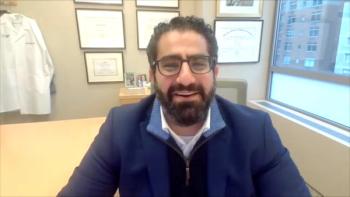
Using Ultrasound Waves to Destroy Liver Tumors
Histotripsy is a new, FDA-approved, minimally invasive technique that destroys liver tumors using high-frequency ultrasound waves.
For some patients with liver cancer, they could be spared invasive surgery to remove their tumor and instead undergo histotripsy, a novel technique utilizing high-frequency ultrasound waves to destroy tumors, explained Shaun P. McKenzie, MD, FACS, a surgical oncologist with Texas Oncology.
In October 2023 the FDA approved histotripsy for treatment liver tumors based on safety and efficacy of the technique. Histotripsy doesn’t require patients to come off chemotherapy for a long period ahead of or after the treatment, and it also allows for real-time visualization of tumor destruction.
“[For] a lot of treatments that we do, we destroy a tumor but have to wait 3 or 6 months to really know: did we really get it all? Is it destroyed?” McKenzie explained. “Whereas in this treatment, the feedback is immediate, and you can even alter the treatment if you don't feel like you're getting all of the tumor.
Another benefit of histotripsy is its ability to target tumors that are intertwined with critical structures, such as blood vessels and bile ducts, without damaging these essential components, he added.
“While we have a lot more liver than we need, if we start injuring and taking away its ability to have blood flow or its ability to drain the bile that it makes, the liver can go into failure, and that's something that we have to be cautious of,” he said.
In order for the procedure to work, the tumor has to be visible on ultrasound and the patient needs to be able to tolerate general anesthesia, as controlling liver movement during treatment is essential. The actual treatment duration varies, taking between 15 minutes to an hour per tumor.
Recovery from histotripsy is generally easy for most patients, McKenzie said. Patients may experience some soreness and fatigue, but these symptoms typically resolve within a week. In comparison, fatigue may last a month after liver resection.
Newsletter
Stay ahead of policy, cost, and value—subscribe to AJMC for expert insights at the intersection of clinical care and health economics.















































